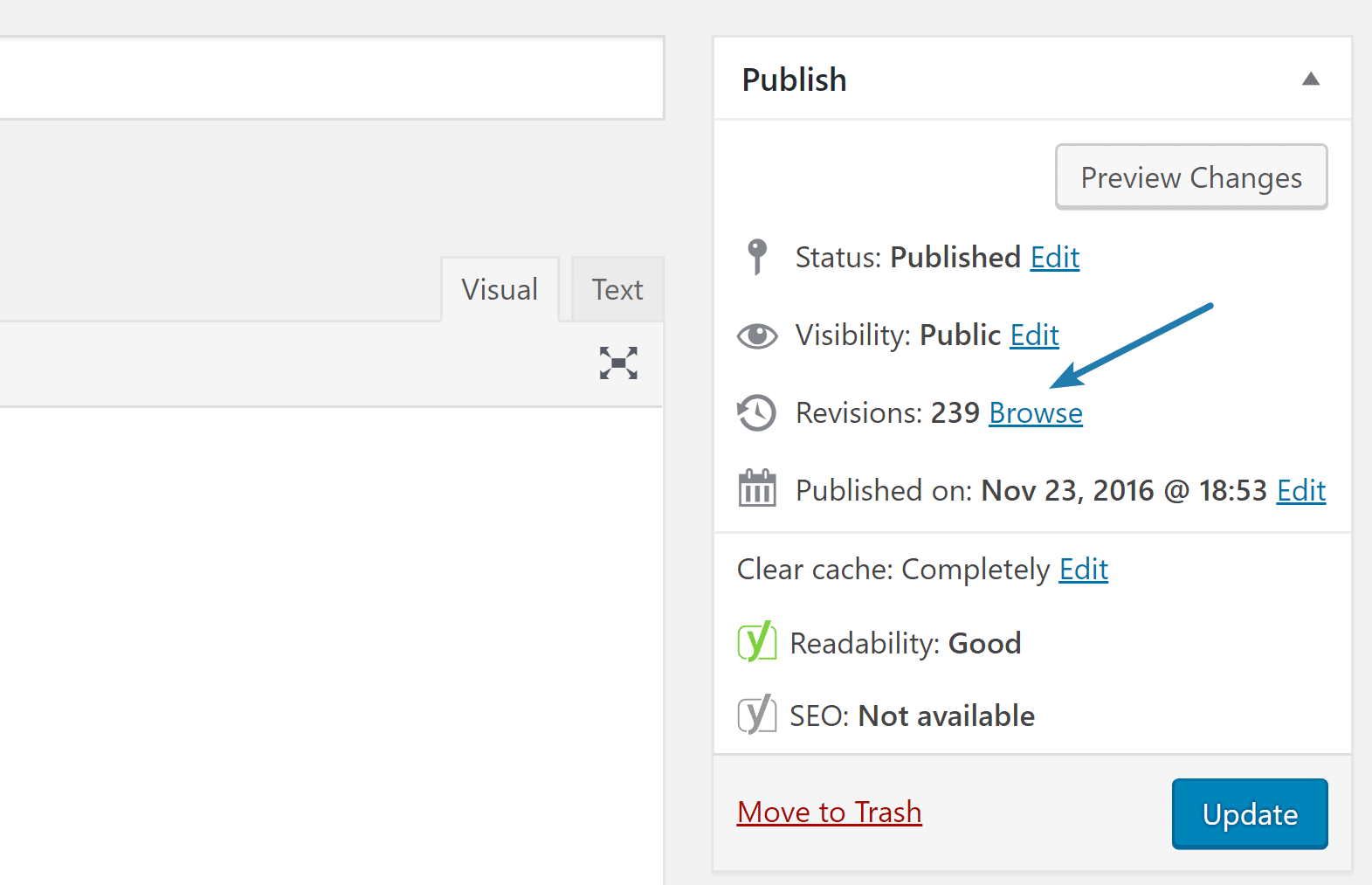

You can change this value in your wp-config file with the following code snippet. You can also completely disable the post revision feature.Īs aforementioned, the default autosave interval is 60 seconds. To save space in your database, you can limit the number of revisions by adding the following line to the beginning of your wp-config file (after the starting can configure some revision-related settings inside your wp-config file.

When you restore a previous revision, the last version of the post is not deleted from the database and you can return to it any time using the same Restore feature.
WORDPRESS REVISIONS UPDATE
Update the post and the restored version will be published on the site. You can restore any previous revision by selecting the revision you want to restore and clicking the “Restore This Revision” button.Īfter clicking the button, the selected revision appears inside the WordPress post editor and you get a notification on the top of the screen, that reminds you of the restoration. When this checkbox is checked, the range slider gets two handles and a “From … To … ” box appears below it so that you can easily see which two revisions you are comparing. However, if you check the “Compare any two revisions” checkbox you can also see the differences between post versions that don’t come after each other. Note that on this screen, you cannot edit the revisions, only check the differences between them.īy default, you can compare two adjacent revisions. You can also use the “Previous” and “Next” buttons to change the position of the slider. You can compare two revisions by moving the range slider on top of the Revisions screen. Their sole purpose is to enable you to restore the autosaved backup if your browser unexpectedly shuts down. Autosaves don’t rewrite the post (as regular revisions do), they are stored as a special revision type. You don’t have to worry about having too many autosaves in the database, as new autosaves overwrite the old ones. The default value of autosave is 60 seconds. Autosave is enabled for all posts and pages by default and you can’t turn it off, however it’s possible to change the autosave interval (see below). WordPress also creates revisions by its autosave feature. Whenever you save a post or a page, a new revision is created in the database and a new entry appears on the “Revisions” screen. So, how can you create revisions? As I mentioned before, WordPress’ revision system is quite automated. You can easily choose the one you want to see by clicking on it. It adds an extra box below the WordPress editor from where you can access the revisions.Īs you can see below, the “Revisions” box lists all the revisions you have.

Open the “Screen Options” menu on the top of the page, and check the “Revisions” option. There’s another way to access revisions from the “Edit Post” (or “Edit Page”) screen. Text strings that were removed from the former version are marked with red, while strings added in the next version are marked with green. The main part of the page is taken up a diff comparison tool. The revision management screen allows you to check the differences between the different versions of your post. Click the “Browse” button to access the revision management screen. The “Revisions” menu is located right to the WordPress editor, inside the “Publish” box. You can access it from either the “Edit Post” ( Posts > All Posts > Edit) or the “Edit Page” screen ( Pages > All Pages > Edit). Revision management is somewhat hidden in the WP admin, as it doesn’t have its own menu in the sidebar. Read Also: Utilizing Version Control Management in WordPress Localize Revisions It gives space to an advanced content management workflow and significantly reduces the risk of content loss. WordPress’ revision system works similarly to code version control systems such as Git or Subversion, only it’s almost completely automated (you don’t have to bother with a command line tool). You don’t have to worry that you lose a previous version of your writing, as each revision is separately saved in the database and you can easily move back and forth between them. One of the best things about WordPress is its built-in revision control system.


 0 kommentar(er)
0 kommentar(er)
